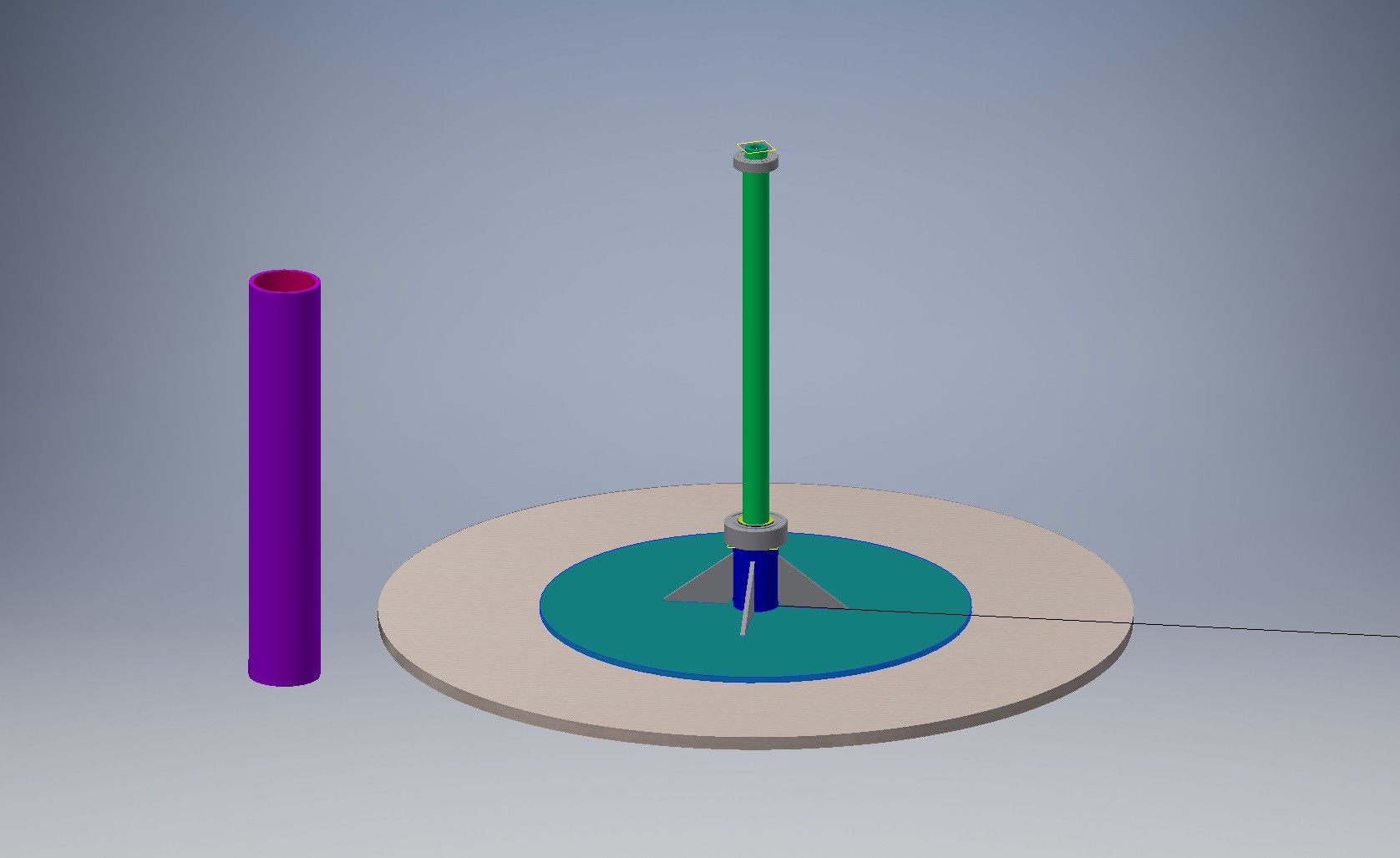-
Design progress so far
07/04/2018 at 20:36 • 0 commentsThis is the innermost part of the inner bearing.
![]()
-
Mechanical Design
07/01/2018 at 18:08 • 0 comments
The spinner will hold two people sitting on its platform, and be able to support two more people climbing on top of them. So 4 people * 250 lbs = 1,000 lbs.We also need to know the dynamic and thrust loads in order to source the bearings that will take the force of all of these people pulling on the shaft.
Dynamic load refers to a force on a system because it is accelerating an object in a given direction. So that's the people sitting on the platform, and it is not moving in the vertical direction.
However, there are dynamic forces in the horizontal directions. The horizontal dynamic load is a wheel turning at 60 mph (that would be crazy, but it's a high estimate) and going from 0 to 60 in 20 seconds.
Rate of acceleration: 60 mph = 88 ft/sec, divided by 20 sec = yielding 4.4 ft/sec^2.
Force = mass * 4.4 = (200lbs (platform) +1000 (people)) * 4.4 = 5280 lbs.
These are ridiculously high estimates. I think spinning at 60 mph might make people puke.
Thrust load runs parallel to the axis of rotation.
-
The dynamo
06/10/2018 at 20:04 • 0 commentsThere will be LEDs because everything is better with blinky!
LEDs powered by a dynamo are really special. http://pilom.com/BicycleElectronics/DynamoCircuits.htm
Dynamo notes:
Brightness is commonly described in two different units of measure: lumens and lux. While battery-powered lights are commonly rated in lumens, dynamo lights are more often rated in lux. Whereas lumens are a measure of the total amount of visible light emitted from a source, lux is a measure of the intensity of light in the usable portion of its beam pattern. This means that two lights with identical lumen ratings can have very different lux measurements, depending on how the light is focused.
Large scale sit-n-spin
Remember the fun spinning toy from the 70s and 80s? We're building one that adults can enjoy.
 artimmerse
artimmerse